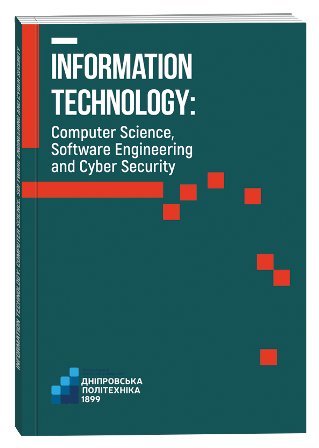CONCEPTUAL MODEL OF THE SOFTWARE ARCHITECTURE FOR PROCESSING MULTI-SOURCE ACOUSTIC SIGNALS
DOI:
https://doi.org/10.32782/IT/2024-4-20Keywords:
Computer simulation, Acoustic modelling, Multi-source sound, Software architecture.Abstract
The paper is devoted to the development of software for modeling the propagation of sound waves in spaces with multiple audio sources. The objective is to create a flexible and scalable software system for acoustic wave modeling that combines numerical methods, computational optimization, and modern visualization, providing an efficient tool for analyzing complex acoustic processes in various environments. Methodology. The proposed software architecture for sound wave simulation is based on a modular approach and employs finite element and boundary element methods to solve acoustic equations, mechanisms for supporting parallel computations, and simulation result visualization. Scientific Novelty. The scientific novelty lies in developing a comprehensive approach to creating software for sound wave simulation using computational methods and algorithms that jointly solve acoustic equations and related equations, GPU acceleration, and multi-threaded processing. This allows achieving high accuracy and reliability in modeling and optimizing computational resources. Conclusions. The developed software model includes a visualization module that ensures three-dimensional interpretation of results and a data storage module for processing large volumes of information. The proposed model enables the study of sound oscillations and the simulation of sound waves from multiple sources, making it useful for solving a wide range of tasks, including the design of acoustic environments and audio technologies.
References
Juraev D., Agarwal P., Elsayed E., Nauryz T. Helmholtz equations and their applications in solving physical problems. 2024. 4. 54–64.
Sacasa-Cespedes S. A Geometric Approach to the Navier-Stokes Equations. 2024. 10.48550/arXiv.2411.18724.
Rosen M., Godin K. W., Raghuvanshi N. Interactive sound propagation for dynamic scenes using 2D wave simulation. Computer Graphics Forum, 2020. 39, 39–46. https://doi.org/10.1111/cgf.14099.
Citarella R., Federico L., Cicatiello A. Modal acoustic transfer vector approach in a FEM–BEM vibroacoustic analysis, Engineering Analysis with Boundary Elements, Volume 31, Issue 3, 2007. Pages 248–258, ISSN 0955-7997, https://doi.org/10.1016/j.enganabound.2006.09.004.
Yijun L. On the BEM for acoustic wave problems, Engineering Analysis with Boundary Elements, 2019. Volume 107, Pages 53–62, ISSN 0955-7997, https://doi.org/10.1016/j.enganabound.2019.07.002.
Xun H., Xin Z., Simon K. R. Adaptive mesh refinement computation of acoustic radiation from an engine intake, Aerospace Science and Technology, 2008. Vol. 12, Issue 5, 418–426, ISSN 1270-9638, https://doi.org/10.1016/j.ast.2007.09.004.
Le Moing G., Vinayavekhin P., Inoue T., Vongkulbhisal J., Munawar A., Tachibana R. Agravante D. Learning Multiple Sound Source 2D Localization. 2020. 10.48550/arXiv.2012.05515.
Lee B. Choi J. Multi-source sound localization using the competitive k-means clustering. 2010. 1–7. 10.1109/ETFA.2010.5641169.
Gao Sh. Jia M., Wu Yu. Jia Yi., Mingchen W. Multiple Sound Sources Localization by using Statistical Source Component Equalization. 2019. 320–325. 10.1145/3373509.3373582.
Jia M. Wu Yu., Bao Ch., Wang, J. Multiple Sound Sources Localization with Frame-by-Frame Component Removal of Statistically Dominant Source. Sensors. 2018. 18. 3613. 10.3390/s18113613.
Wang M., Freund J. B., Lele, S. K. COMPUTATIONAL PREDICTION OF FLOW-GENERATED SOUND. Annual Review of Fluid Mechanics, 2006. 38, 483–512.







